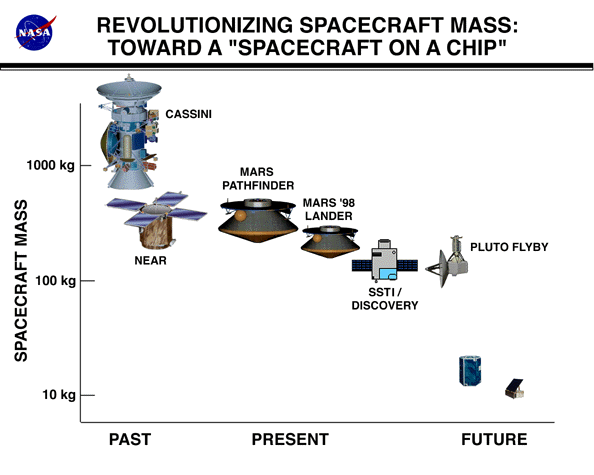
Approach: The replanning of the REE Project was carried out via extensive interaction and coordination with stakeholders, relevant government agencies/ laboratories, industry, and academia, through the use of workshops and reviews.
Accomplishments: Two workshops were held/participated in during FY'95. The REE Task participated in the February 8-10, 1995 Workshop on Miniature Technology for Future NASA Missions, which was sponsored by the NASA Office of Space Access and Technology. A special working group was organized and chaired by the REE Task, focusing on ``On-Board Computing.'' A Workshop on Remote Exploration and Experimentation (REE) was organized by the Jet Propulsion Laboratory on August 21-23, 1995. The workshop chair was Dr. Paul Hunter, Manager, NASA HPCC Program. The workshop was sponsored by the NASA High Performance Computing and Communications Program, Office of Aeronautics.
Three major reviews of the REE Task have been presented in FY 1995. The reviews were: 1) A briefing on plans for the REE Project was presented to the JPL TAP Office on April 20, 1995; 2) A briefing was presented to a panel of REE ``Stakeholders'' on April 21, 1995 at NASA Headquarters. The panel reviewed the evolving plan for the REE Project over the time frame 1995-1999; and 3) A review of the REE Task was presented as part of the Independent Annual Review (IAR) of the NASA HPCC Program. An important benefit to the REE Task activities this year was the association formed with Professor David Schimmel of the Georgia Institute of Technology as a Summer Faculty Fellow. He worked closely with the REE Team to develop long range plans for REE, and will continue to consult on REE for JPL through December, 1995.
Significance: The reviews and workshops identified many challenges to the realization of scalable, embedded computing in space. Many facets of REE were identified that were consistent with the objectives of the NASA New Millennium Program. The vision of REE was found to be consistent with that expressed in the NASA Strategic Plan, and the division of the REE Task into separate thrusts aimed at developing high-performance and ultra-low-power technology was determined to be a sound approach. REE's plans to partner with industry and academia, and to leverage existing NASA and other government programs where appropriate was strongly endorsed. A key result was that FY 1996 should be designated as a study year for REE in order to refine concepts, plans, and costs estimates to develop a detailed Implementation Plan.
Status/Plans: Several study contracts will be let to evaluate architecture options, bound requirements, and identify enabling technologies and cost drivers. The results of these studies will be used to issue a formal contract in late FY'96. The REE Project will hold a Review in April, 1996 in order to assess the project's plans, approaches, areas of risk, and costs.
Point of Contact:
Robert Somoano
Jet Propulsion Laboratory
robert.b.somoano@jpl.nasa.gov
(818)-354-2213